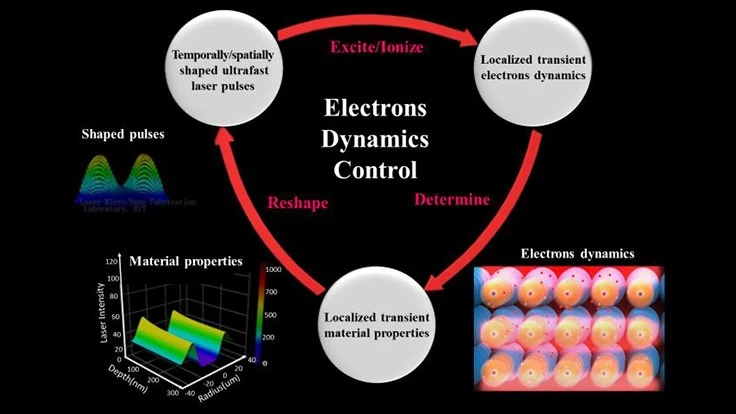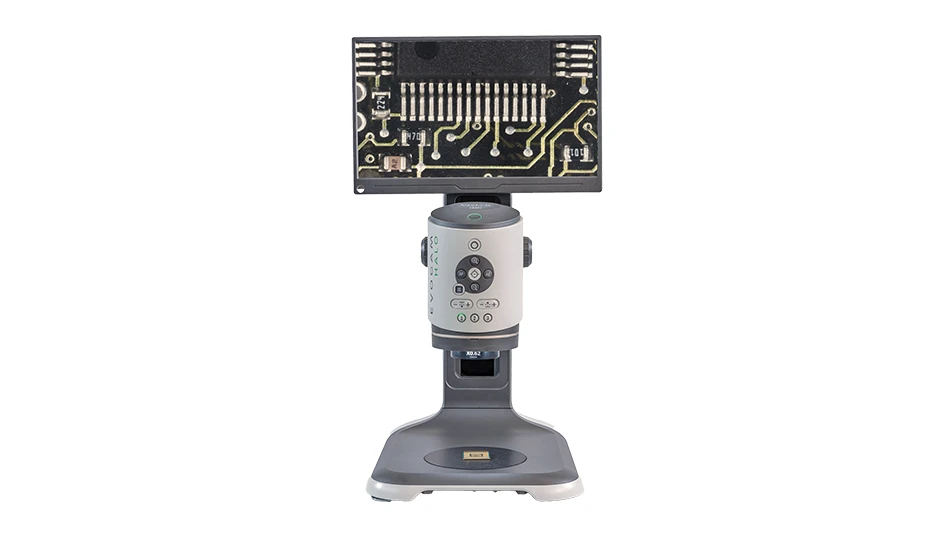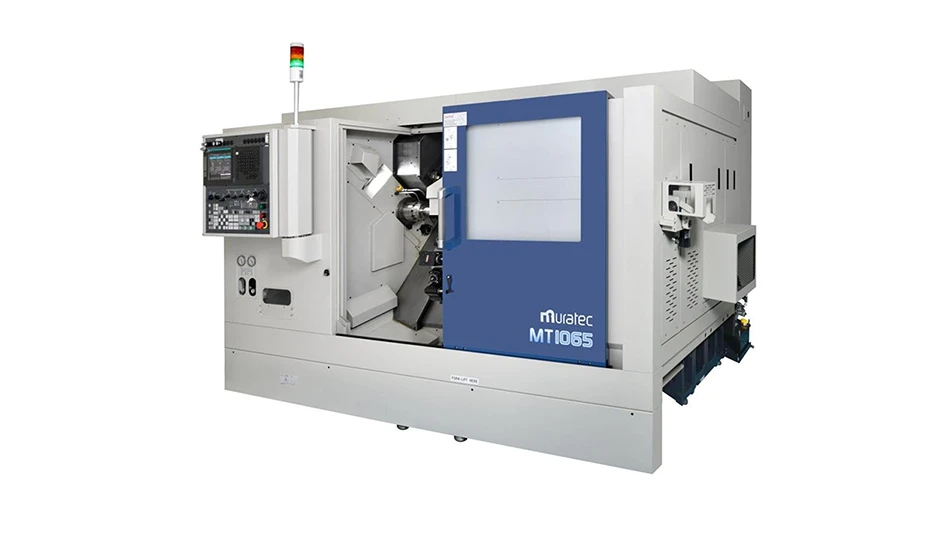
(Above photo) A schematic diagram of the idea of electrons dynamics control. Photo credit: Lan Jiang, An-Dong Wang, Bo Li, Tian-Hong Cui & Yong-Feng Lu.
Femtosecond lasers are capable of processing any solid material with high quality and high precision using their ultrafast and ultra-intense characteristics. With the continuous development of laser technology, ultrafast laser manufacturing would hopefully become one of the primary methods employed in high-end manufacturing in the future.
Recently, researchers realized a new method termed electrons dynamics control for ultrafast laser micro/nano fabrication. For the first time, the localized transient electrons dynamics in laser fabrication can be actively controlled to manipulate material properties, which greatly enhances the efficiency, quality, uniformity, and precision of laser fabrication.
This research is conducted by the group of Professor Lan Jiang from Beijing Institute of Technology, in cooperation with Professor Tian-Hong Cui from Minnesota University, Twin City, and Professor Yongfeng Lu from Nebraska University, Lincoln. Their research results were recently reviewed in Light: Science and Applications.
Throughout the past decade, the research group has devoted their efforts to studying novel methods of manufacturing based on electrons dynamics control. They used the temporally/spatially shaped ultrafast laser to control the localized transient electron dynamics (e.g., density, temperature, and distribution); furthermore, they modified the localized transient material properties and adjusted material phase change; eventually, they implemented the novel fabrication method.
They established a multiscale model of ultrafast laser materials interactions and predicted that the temporally/spatially shaped ultrafast pulses can control the laser material interaction processes. Furthermore, on the basis of the theoretical predictions, they experimentally verified the validity of the electrons dynamics control method. In addition, they proposed and implemented a multiscale measurement system for observing femtosecond laser ablation dynamics from femtosecond scale to second scale, which provided experimental evidences for the proposed mechanism.
Using this method, they greatly improved fabrication efficiency, quality, repeatability, and precision, as well as extended the fabrication limits of laser manufacturing. The new method has resolved some critical manufacturing challenges and already been applied to a series of major Chinese national projects.
This novel method has realized the active control of localized transient electrons dynamics in the laser fabrication process for the first time. Furthermore, it has opened the wide exciting possibilities in the control of fabrication on electron level, which may provide revolutionary contributions to high-end manufacturing, material properties manipulation, and chemical reactions control.
Latest from Today's Medical Developments
- Dassault Systèmes enters next phase of Living Heart Project with AI-powered virtual twins
- Bruker’s X4 POSEIDON advanced X-ray microscope
- #53 - Manufacturing Matters - 2024 Leaders in Manufacturing Roundtable
- Festo Incredible Machine celebrates its premiere at the Hannover Messe
- Join us for insights on one of the hottest topics in manufacturing!
- Turnkey robotic systems are already behind the times
- You can still register for March’s Manufacturing Lunch + Learn!
- HERMES AWARD 2025 – Jury nominates three tech innovations





